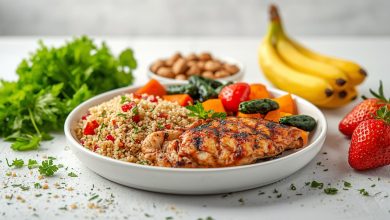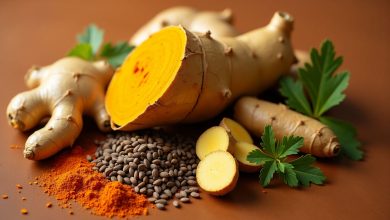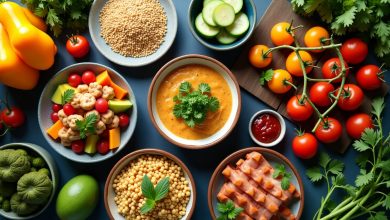Bean & Corn Tortillas: Complete Protein Recipe from Scratch
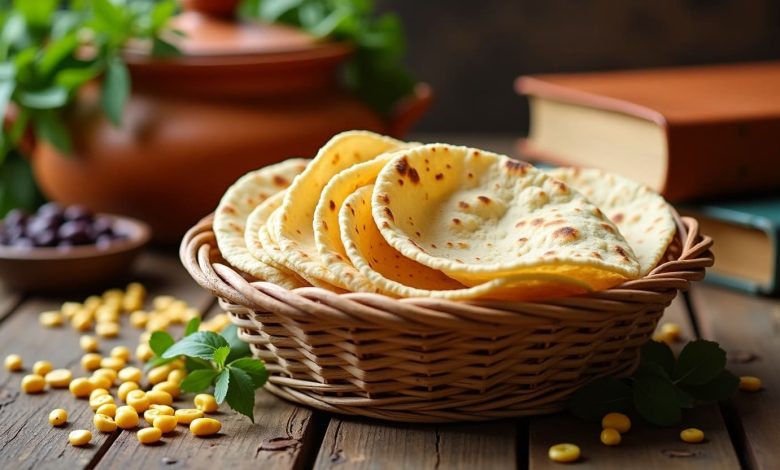
For thousands of years, bean & corn tortillas have provided complete protein nutrition across the Americas. This traditional combination delivers all 9 essential amino acids your body needs, making it one of nature’s perfect plant-based protein pairs.
Why This Complete Protein Recipe Works
- 🌱 100% plant-based complete protein
- 💪 Muscle-supporting amino acid profile
- 🧠 Scientifically validated (Nutrients Journal 2022)
- 🕰️ 3,000-year-old nutritional wisdom
The Science Behind the Perfect Protein Pairing
One of the most remarkable aspects of beans and corn is their complementary protein profile. While neither food contains all nine essential amino acids on its own, together they form a complete protein source that rivals animal products in nutritional value.
Beans are particularly rich in lysine, an amino acid crucial for collagen production, calcium absorption, and immune function. However, they’re relatively low in methionine, which plays vital roles in metabolism and detoxification. Corn happens to be strong where beans are weak – it contains ample methionine but lacks sufficient lysine. When combined, these two humble ingredients provide all the essential amino acids your body needs to build and repair tissue.
A 2022 study published in the journal Nutrients found that the bean-corn combination offers about 85% of the protein bioavailability found in whey, making it an excellent option for vegetarians, vegans, or anyone looking to reduce their meat consumption without sacrificing protein quality. The research also noted that regular consumption of this pairing can help maintain muscle mass just as effectively as some animal protein sources.
Fiber: The Unsung Hero of This Dynamic Duo
Beyond their protein benefits, beans and corn together create an ideal fiber matrix that supports digestive health in multiple ways. Beans are packed with soluble fiber, which forms a gel-like substance in your digestive tract that helps regulate blood sugar levels and lower LDL cholesterol by binding to bile acids.
Corn, especially when consumed as whole-grain masa harina, provides insoluble fiber that adds bulk to stool and promotes regular bowel movements. This combination of fiber types creates what nutritionists call the “second meal effect” – where the fiber from these foods continues to moderate blood sugar responses even at subsequent meals.
Recent research from the Journal of Nutrition (2023) demonstrated that the unique fiber blend in bean and corn tortillas significantly improves gut microbiome diversity compared to either ingredient alone. The study found increased populations of beneficial bacteria like Bifidobacterium and Lactobacillus after regular consumption, which are associated with better immune function and reduced inflammation.
Micronutrients That Pack a Powerful Punch
When we examine the vitamin and mineral content of these foods, their combined nutritional profile becomes even more impressive:
Iron: Beans provide substantial amounts of non-heme iron (about 25% of your daily value per cup), while the vitamin C traditionally served with these dishes (in salsas or lime juice) enhances absorption.
Folate: Critical for DNA synthesis and cell division, beans offer about 58% of your daily folate needs per cup. This B vitamin is especially important for pregnant women.
Zinc: Essential for immune function and wound healing, this mineral is more bioavailable from these foods when prepared using traditional nixtamalization methods (more on that later).
Antioxidants: Corn contains unique antioxidants like lutein and zeaxanthin that support eye health, while beans provide flavonols and anthocyanins that combat oxidative stress.
The Ancient Art of Nixtamalization: A Nutritional Game-Changer
One of the most fascinating aspects of traditional corn preparation is the process called nixtamalization – soaking dried corn in an alkaline solution (traditionally limewater) before grinding. This ancient technique, developed over 3,000 years ago by Mesoamerican civilizations, transforms corn’s nutritional profile in several remarkable ways:
- Niacin (Vitamin B3) Availability: Untreated corn contains niacin in a bound form that humans can’t absorb. Nixtamalization releases this vital nutrient, preventing deficiency diseases like pellagra.
- Mineral Enhancement: The lime used in the process adds bioavailable calcium to the corn.
- Mycotoxin Reduction: Research shows this method can reduce harmful fungal toxins by up to 90%.
- Improved Protein Quality: The alkaline treatment makes corn’s proteins more digestible and enhances the overall amino acid profile.
- Flavor Development: Nixtamalization creates the distinctive, slightly nutty flavor characteristic of authentic corn tortillas.
While you can nixtamalize corn at home using food-grade calcium hydroxide, most modern home cooks use pre-made masa harina (nixtamalized corn flour) from trusted brands like Maseca or Bob’s Red Mill for convenience.
Step-by-Step Guide to Perfect Bean & Corn Tortillas
Now that we’ve explored the science behind these ingredients, let’s dive into the practical process of making your own tortillas from scratch.
Ingredients You’ll Need
For the Masa Dough:
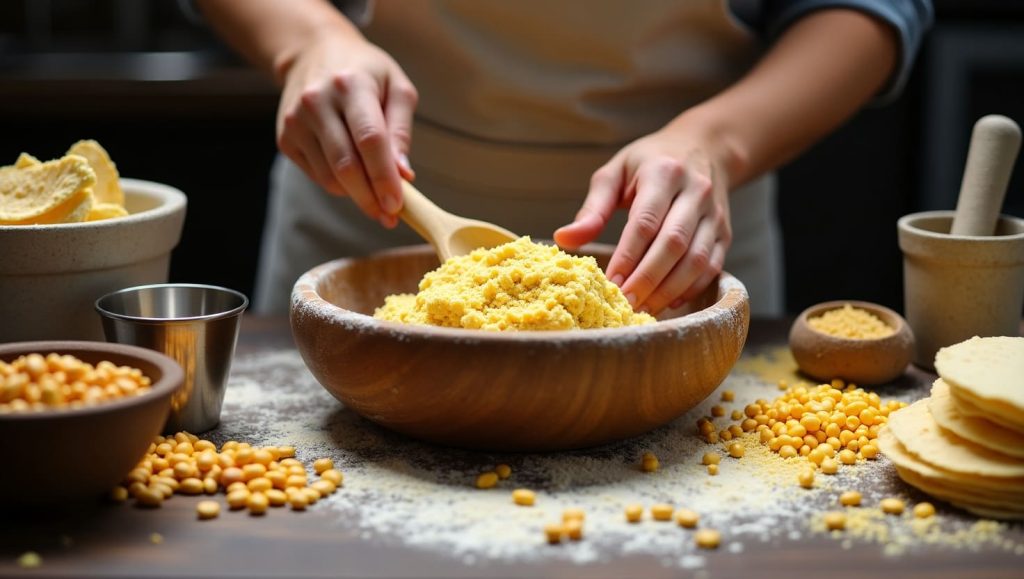
- 2 cups masa harina (nixtamalized corn flour)
- 1¼ to 1½ cups warm water (about 110°F/43°C)
- ½ teaspoon fine sea salt
- 1 tablespoon avocado oil or melted lard (optional, for flexibility)
For the Bean Filling:
- 1½ cups cooked beans (black, pinto, or heirloom varieties)
- ½ teaspoon ground cumin
- ½ teaspoon smoked paprika
- 1 tablespoon lime juice
- Salt to taste
Essential Equipment
- Tortilla press or heavy flat-bottomed pan
- Cast iron skillet or comal
- Mixing bowls
- Measuring cups and spoons
- Parchment paper or plastic bags for pressing
Step 1: Preparing the Masa Dough
- In a large mixing bowl, whisk together the masa harina and salt until well combined.
- Gradually add warm water while mixing with your hands. The ideal dough should feel like soft Play-Doh – not sticky, but not crumbly either.
- If using, incorporate the fat at this stage for more pliable tortillas.
- Knead for 2-3 minutes until smooth, then cover with a damp towel and let rest for 15-20 minutes. This resting period allows the masa to fully hydrate and makes it easier to work with.
Pro Tip: The exact amount of water needed can vary based on humidity and the specific masa harina brand. Add water gradually until the dough holds together when squeezed without cracking.
Step 2: Creating the Bean Filling
- If using canned beans, drain and rinse them thoroughly. For dried beans, cook until very tender (about 1½ hours for most varieties).
- In a skillet over medium heat, warm a teaspoon of oil and add the beans along with cumin, paprika, and lime juice.
- Mash the beans with a potato masher or fork until you achieve your desired consistency – some prefer slightly chunky, others completely smooth.
- Cook for 3-5 minutes to blend flavors, then season with salt to taste. Let cool slightly before using.
Nutrition Boost: Adding lime juice not only enhances flavor but also increases iron absorption from the beans thanks to its vitamin C content.
Step 3: Forming the Tortillas
- Divide the rested dough into 12 equal portions (about 45g each) and roll into smooth balls.
- Cut two squares of parchment paper slightly larger than your tortilla press.
- Place one dough ball between the parchment sheets and press firmly in the tortilla press. Aim for about ⅛-inch thickness – slightly thicker than commercial tortillas.
- Carefully peel back the top parchment, place about 1 tablespoon of bean filling in the center, then fold the tortilla over to create a half-moon shape. Alternatively, you can place another pressed tortilla on top to make a bean-filled round.
- Seal the edges gently but firmly to prevent filling from leaking during cooking.
Alternative Method: If you don’t have a tortilla press, use a heavy flat-bottomed pan to press the dough between parchment sheets. Apply even pressure to achieve uniform thickness.
Step 4: Cooking to Perfection
- Preheat a cast iron skillet, comal, or heavy non-stick pan over medium-high heat (about 375°F/190°C). No oil is needed – these cook best on a dry surface.
- Carefully transfer a tortilla to the hot surface and cook for about 45-60 seconds until the edges begin to dry and the bottom develops light brown spots.
- Flip and cook the second side for another 60 seconds. The tortilla should puff slightly when air pockets form.
- Transfer to a cloth-lined basket or tortilla warmer to stay soft and pliable.
Expert Technique: For extra flavor, allow some charring (known as “manchas” in Mexican cuisine) by pressing the tortilla briefly against the hot surface with a spatula.
Nutritional Breakdown
A serving of two bean and corn tortillas (about 100g total) provides approximately:
- Calories: 260
- Protein: 8-10g (complete profile)
- Fiber: 8g (30% DV)
- Iron: 2.5mg (14% DV)
- Folate: 120mcg (30% DV)
- Zinc: 1.5mg (14% DV)
This makes them an exceptionally nutrient-dense food choice, particularly for plant-based diets.
Creative Variations to Try
- Cheesy Black Bean: Add crumbled queso fresco or shredded Monterey Jack to the filling
- Spicy Chipotle: Mix chipotle peppers in adobo sauce into the beans
- Herb-Infused: Stir chopped fresh epazote or cilantro into the masa
- Rainbow Corn: Use blue or red masa harina for vibrant colors
- Sweet Dessert: Fill with mashed sweet potato and cinnamon
Serving Suggestions & Meal Ideas
Beyond traditional tacos, these versatile tortillas can be used in countless ways:
- Breakfast: Scrambled eggs with beans and salsa
- Lunch: Veggie and avocado wraps
- Dinner: Enchiladas with mole sauce
- Snack: Quesadillas with mushrooms and cheese
Pair them with vitamin C-rich foods like pico de gallo or citrus-marinated cabbage to maximize iron absorption.
Storage and Reheating Tips
- Short-term: Store in an airtight container with a damp paper towel for up to 3 days
- Freezing: Layer between parchment paper in freezer bags for up to 3 months
- Reheating: Warm on a dry skillet for 30 seconds per side to restore texture
Troubleshooting Common Issues
Problem: Tortillas crack when folded
Solution: The dough needs more water – add 1 teaspoon at a time until pliable
Problem: Tortillas stick to the press
Solution: Always use parchment paper and ensure dough isn’t too wet
Problem: Filling leaks during cooking
Solution: Use less filling and seal edges more thoroughly
The Bigger Picture: Why This Matters Today
In our modern world of processed foods and fad diets, returning to these ancient foodways offers numerous benefits:
- Sustainability: Beans and corn have low carbon footprints compared to animal proteins
- Affordability: These ingredients provide high nutrition at low cost
- Cultural Preservation: Keeping traditional food knowledge alive
- Health: Combating diet-related diseases with whole, minimally processed foods
By making bean and corn tortillas from scratch, you’re participating in a culinary tradition that has nourished generations while providing your body with optimal nutrition. The process connects you to the rhythms of traditional cooking – the feel of masa between your fingers, the aroma of toasting corn, the satisfaction of creating something fundamental yet profound.
Whether you’re seeking complete plant-based proteins, exploring ancestral cooking methods, or simply wanting to enjoy truly authentic tortillas, this ancient pairing continues to prove its worth in modern kitchens. The combination of beans and corn isn’t just food – it’s wisdom passed down through centuries, now validated by contemporary science, waiting to nourish you and your family.
Ready to experience this culinary heritage firsthand? Gather your ingredients, clear some counter space, and prepare to connect with one of humanity’s most enduring and nutritious food traditions. The simple act of making these tortillas links you to countless generations who came before – and now you understand exactly why this combination has stood the test of time.
Common Questions (FAQ)
Q: Can I use canned beans?
Yes! Rinse and drain them first. Mash or blend for a smoother texture.
Q: Is this gluten-free?
Absolutely. Masa harina is naturally gluten-free.
Q: Can I bake instead of pan-frying?
Yes, but pan-cooking gives better texture. If baking, brush with oil and bake at 400°F for 10–12 minutes.
Q: What’s the shelf life?
Best eaten fresh. Refrigerate for 3–4 days or freeze up to 3 months.
Final Thoughts: Homemade Goodness, One Tortilla at a Time
Making your own Bean & Corn Tortillas is a joyful, healthy way to reconnect with ancestral wisdom and nutritional common sense. You’re not just eating—you’re nourishing, crafting, and participating in a legacy of sustainable, whole-food cooking.
Whether you’re plant-based, gluten-free, or just love great food, this recipe deserves a place in your weekly routine.
Let us know how yours turn out! Tag @fitzolife on Instagram or share your version in the comments.
Explore More:
